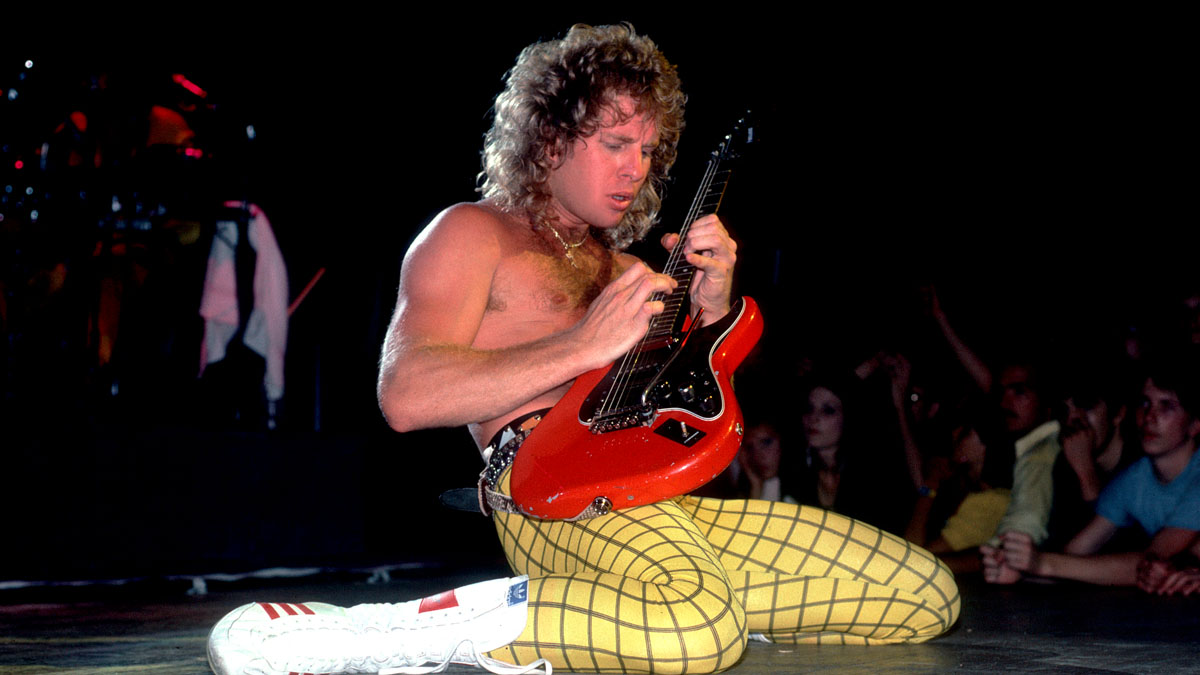The secrets behind Brad Gillis’s guitar tone on Night Ranger’s Sister Christian
This stone-cold classic from 1983's Midnight Madness finds Gillis perfecting the era's hard-rock guitar tone

You know that joke that goes, “What’s the last thing a drummer says before getting kicked out of the band? ‘Hey, I’ve written a song!’?”
Judging by the example of Night Ranger’s Sister Christian, maybe it’s better to listen to the drummer’s ideas first before delivering walking papers.
Written and sung by drummer Kelly Keagy, Sister Christian became Night Ranger’s all-time biggest hit, and thanks to its success – peaking at Number 5 on the Billboard Hot 100 singles chart in 1984 – it inspired a landslide of hair metal power ballads throughout the rest of the Eighties.
One of Night Ranger’s most distinctive characteristics was its initial lineup featuring two phenomenal lead guitarists – Brad Gillis and Jeff Watson – but Sister Christian is one of only a handful of songs that the band recorded where only one of the two guitarists participates. Gillis did the honors in this instance, delivering a soaring, melodic solo where he gives his whammy bar a good workout.
One of the earliest adopters of the Floyd Rose double-locking vibrato, Gillis raised the bar (literally) on the device’s creative potential by using it for a dazzling portamento effect to glide between notes with precision.
Gillis’ whammy bar techniques require a lot of gain, compression and volume output from the amp to provide the sustain needed to allow the notes to sing at a consistent level while the bar is manipulated.
To enhance pick harmonics, Gillis cranked the treble and presence knobs all the way up to 10. Using the graphic EQ, which is located in the signal chain after the amp’s tone stack, on his Mesa/Boogie Mark IIB head, he dialed in a midrange boost to add body to his tone and tame harsh treble overtones.
Get The Pick Newsletter
All the latest guitar news, interviews, lessons, reviews, deals and more, direct to your inbox!
A short slapback delay is subtly mixed underneath the dry guitar signal to add a hint of reverb-like ambience to the long, sustained notes, and a touch of studio reverb was added during mixing to further embellish the guitar’s sustain.
Original Gear
GUITAR: Customized 1962 Fender Stratocaster with 22-fret rosewood neck and custom Seymour Duncan bridge humbucker (bridge pickup), Volume: 10.
AMP: Mesa/Boogie Mark IIB Coliseum (Lead channel) (Volume: 8/Pull Bright, Treble: 10/Pull Shift, Bass: 4, Middle: 6, Master 1: 6/Pull Gain Boost, Lead Drive: 3.5/Pull Lead, Lead Master: 8/Pull Bright, Presence: 10, graphic EQ 80Hz: +3dB, 240Hz: +9dB, 750Hz: +5dB, 2200Hz: +1dB, 6600Hz: -3dB, EQ: In, Full Power) with ARC 2x12 cabinet with 1965 Celestion G12M speakers.
EFFECTS: Roland SDE-3000 (Time: 252ms, Feedback: 17, Output: 99, Rate: Depth: 00, Delay Time: X1).
STRINGS/TUNING: GHS Boomers .009-.042/Standard.
PICK: Dunlop .020-inch triangular stainless steel.
Get the sound, cheap!

Adrian Smith's signature Jackson is a player's guitar offering great value and a feel and tone that's ideally suited to 80s hard-rock exertions. To get closer to Gillis' tone circa-Midnight Madness, swap its bridge humbucker out with a Seymour Duncan TB-4 JB [below].


Line 6 Spider V 120 MkII – tone tip:
Use the Spider V’s “1985 Cali Crunch” amp model and “Tread 4x2” cab model, along with the “Digital Delay” and “Medium Hall” effects mixed just slightly in the background.
Chris is the co-author of Eruption - Conversations with Eddie Van Halen. He is a 40-year music industry veteran who started at Boardwalk Entertainment (Joan Jett, Night Ranger) and Roland US before becoming a guitar journalist in 1991. He has interviewed more than 600 artists, written more than 1,400 product reviews and contributed to Jeff Beck’s Beck 01: Hot Rods and Rock & Roll and Eric Clapton’s Six String Stories.
Guitar World Discussion: Who is the most underrated guitar player of all time?
Ozzy Osbourne’s solo band has long been a proving ground for metal’s most outstanding players. From Randy Rhoads to Zakk Wylde, via Brad Gillis and Gus G, here are all the players – and nearly players – in the Osbourne saga











